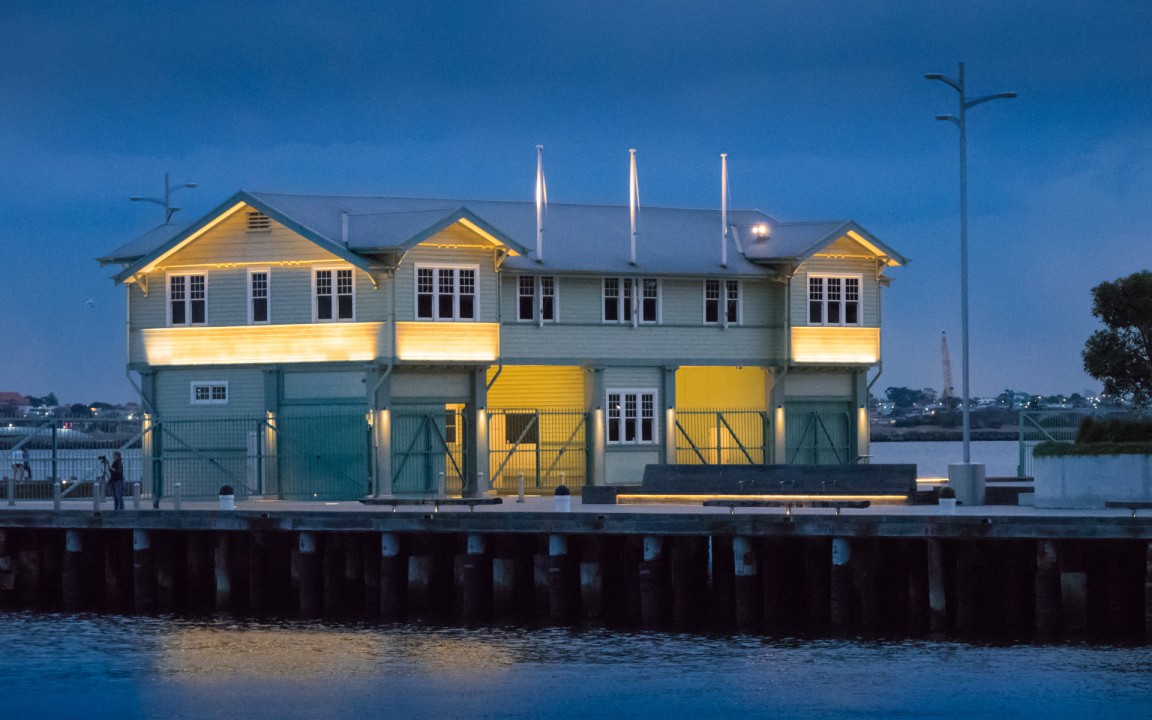
Back in July I posted a blog about the two new 2015 RX cameras and reported that I found the spec sheets were almost unbelievable.
“Sony has pulled the proverbial ‘rabbit out of the hat’ and is offering some amazing new features for these ‘Bridge’ and ‘Pro-Compact’ cameras. There are a lot of very cool features announced in this new Sony Bridge camera, but 1,000 frames per second at Full HD (in PAL mode) for a camera costing just US $1K is enough reason for me to be ordering one. Oh happy days “.
I have since taken the RX10 II camera out for a road test and my initial feelings about the camera are all positive. This may not be the perfect camera for everyone, but it certainly fits the bill as the ideal second camera for some users who own professional cameras that don’t yet shoot high quality movies or for those photographers who don’t want to take out a kit of lenses every time they leave the house.

Sensor
The RX10 II shares the same 1-inch sensor as the RX100 IV. The 1.0-type stacked CMOS sensor with DRAM chip of these new RX cameras offers state-of-the-art ground-breaking sensor design that has made Sony sensors the envy of all other camera manufacturers. This 1-inch sensor can hold its own with most of the APS-C sensors that you find in entry level DSLR-S and will undoubtedly find its way into many non-Sony branded cameras. I believe that this sensor is at least one generation ahead (possibly two) of any sensor currently made by other manufacturers. It has great dynamic range and is surprisingly good in low light at high ISO values. Not only does the sensor offer high IQ but can also move data at a blazingly fast speeds which has made the Full HD 4K recording and High Frame Rate (HFR) recording possible.

Design, functionality and features
If weight and size was an important factor in your decision to buy a compact, non-ILC (interchangeable lens camera), then my vote would have to go to the RX100 IV which is compact enough to fit comfortably in a jacket pocket or my wife’s clutch bag. The size and weight of the RX10 II is about 25% up on the A6000 with the Zeiss SEL16-70F4 lens (24-135 equivalent). The reason for the additional weight and size of the RX10 II is the impressive Vario-Sonnar T* 24-200 (equivalent) constant f2.8 lens. The RX cameras are, of course, fixed lens cameras and so the advantage of a 6x optical zoom (in the 3:2 capture mode) is the first obvious benefit for those choosing the RX10 over the RX100 or A6000 cameras (the 55-210 zoom for the A6000 only has a maximum aperture of f/6.3 at maximum zoom, although it does have a longer equivalent reach). The RX10 II camera will also suit users with slightly larger hands who would find the RX100 user controls a little cramped (due to its diminutive size) and the extra size in the body provides room for a large and bright LCD (larger than the A6000). The functionality of the RX10 feels very much like using a DSLR or ILC Mirrorless camera. Sony’s decision to add an aperture control ring on the lens and also an option to set a minimum shutter speed in Auto ISO (or just increase the standard shutter speed to ‘Fast’ or ‘Faster’) makes shooting in Aperture priority a rewarding experience. A top-facing LCD panel for info readout is also a useful extra not found on the A6000 and A7 cameras (a feature that will remind many of using their old DSLR’s). As I am used to adjusting aperture using the front or rear control wheel on the camera, I was a initially a little confused when the rear dial did not adjust the aperture in Aperture Priority mode. There is no option in the Custom Settings to either assign this to another function or have it adjust aperture as well as the aperture ring on the lens (perhaps a firmware update will add functionality here).

The click you feel when changing between f-stops on the lens (in 1/3 stop increments) can be switched off when shooting movies if you want to change the iris (aperture) smoothly. The lens can also be zoomed smoothly either on the barrel or by using a lever close to the shutter release. There is also an option to change the zoom speed in the menus, which another positive for movie shooters but a slightly less pleasurable experience than using a mechanical zoom when shooting stills. I was pleased to find a lever to change the focus mode (AF-S / AF-C / DMF and MF) comfortably situated in the lower corner of the camera body by the lens (a feature that I would like to see on the A7 and A6000 cameras). When you switch to Manual Focus the zoom ring changes its functionality to adjust focus (Focus Peaking and Focus magnify makes this an easy affair). Most of the other controls of the camera are pretty much what you would expect to find on the A6000 and A7 cameras, and the menus will be familiar for anyone who has used one of the later model Alpha cameras. One other advantage of this camera over the RX100 IV would be the hot-shoe (the hot shoe disappeared from the RX100 with the release of the RX100 III). Although the RX100 III and IV cameras have an ingenious pop-up EVF, the one found on the RX10 II is vastly superior in size and quality and is even higher resolution (XGA) than the one used on the A6000.

Performance
At lower ISO settings it is hard to pick that the images or movies created by the RX10 II are coming from a 1.0 inch sensor and not from the much larger APS-C or Full-Frame sensors. The 20.2 megapixel images provide plenty of opportunity to crop generously and still produce 4K web images or large prints. The bright f2.8 aperture means that even in low-light conditions the RX10 II can hold onto low ISO values for longer before it has to push ISO to achieve a correctly exposed image. Lower Image Quality (IQ) when compared to the images produced by the A6000 or A7 cameras will only be noticeable when shooting indoors or during twilight. If you are prepared to carry a light tripod or external flash even this may prove not to be a disadvantage. One of the distinct advantages to using a fixed lens camera is the problem of dust on the sensor will never rear its ugly head or you will never be caught with the wrong lens on your camera. The focal range of this camera will only present a problem for lovers of extreme wide angle architecture or landscape work or wildlife/action photography. For most photographers the 24-200 equivalent focal range will cover 95% or more of their photographic needs. For photographers who enjoy capturing long exposures there is a built in ND filter that will extend the shutter speed by a factor of 8 (a 1/8 second exposure will require an exposure of 1 second after the ND filter is switched on). This is also essential for photographers shooting movies who want to keep their shutter speed slow in bright ambient conditions (it is usual to keep the shutter speed to 1/50 or 1/100 second for movie work). Ideally I would like to see additional options added to increase the strength of the ND in future releases, e.g ND8 to ND64.

High Frame Rate and 4K Movies
Many first took notice of this camera because of the advertised 960 or 1,000 frames per second high frame rate (actual rate depends on region – NTSC or PAL). You can only record a second or two of real time in this shooting mode, but when played back up to 40 times slower it is more than enough if you have caught the moment of action. The ability to trigger the recording before or after the event has happened increases your chances of success. I find 250 frames per second is more than enough for my needs and as this produces the best quality HFR movies I will probably stick with the ‘Quality Priority’ rather than the ‘Shoot Time Priority’ option at this rate. I am also pleased to see the 100 frames per second (120 in NTSC), we first saw with the arrival of the A7S and RX100 III cameras, now available on the RX10 II at Full HD (1080 x 1920). We also have 60M and 100M (MB/S) options for saving movies with low compression (this allows for more aggressive grading in post production before the movie falls apart). All of these higher quality movie recording options require you to change from the older AVCHD to the XAVC-S codec, and use an SDXC rather than an SDHC memory card. Choose a fast 95 MB/S card if you intend to use the 100M options for 4K and 100P movies. The RX10 II also has ‘audio in’ and ‘out’ ports and the Level indicator that went missing in Action when the NEX 6 was updated to the A6000 makes a welcome return.

Conclusions
Many will look at the price tag of this camera and wonder if it’s worth the price, as they will find an A6000 twin lens kit (16-50 and 55-210) for less than the price of this camera. They will, however, find it difficult to fault the IQ or feature set that this camera delivers. This camera has many advantages over the A6000 twin-lens option. The Zeiss 24-200 f/2.8 T* Lens is more than two stops brighter at most focal lengths and not having to change lenses or worry about dust is a big plus when you need to grab shots in a hurry. The HFR and 4K video options make this very attractive for owners of older Alpha models who are happy with the stills quality and also interested in second camera ownership. For photographers who are looking for one camera that will do everything this could well be the one. My only reservation about recommending this camera to anyone would be for those photographers who take pleasure in collecting lenses. As one photographer put it “we date our cameras but marry our lenses”. Wise investment in good glass is never a waste of money and The RX10 II has some seriously good glass attached to it. It is only the permanent ‘attachment’ of the T* glass that one must consider before investing in the RX10 II. I would highly recommend this camera after these considerations have taken place.
The Wow factors
- A ‘Stacked’ 1inch sensor allowing cutting-edge new features such as 40x super slow motion bursts of movie capture (1,000 frames per second).
- 4K recording using the XAVC-S Codec
- Super-fast Anti-Distortion Shutter of up to 1/32000 sec
- Fast Intelligent AF
- 14 frames per second in full-resolution stills mode
- 100/120 frames per second at full HD with low 100M compression for high quality movies (this is not limited to short bursts as with HFR recording).
Gallery
Purchase an RX10II: Cyber-shot DSC-RX10 II Digital Camera

